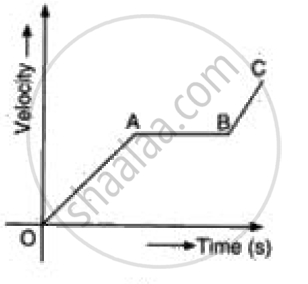Advertisements
Advertisements
प्रश्न
A car traveling at 60 km/h, stops on applying brakes in 10 seconds. What is its acceleration?
उत्तर
First convert 60 km/h in m/s.
60 km/hr =(60 X 1000)/3600 = 16.7 m/s.
This is initial velocity of car i.e u = 16.7 m/s.
As car stops in 10 seconds so final velocity is =0 m/s.
So acceleration = (v-u)/t = (0-16.7)/10 = -1.67 ms-2.
Acceleration of car is = -1.67 ms-2.
APPEARS IN
संबंधित प्रश्न
Give one example of the following motion:
Uniform retardation
A vehicle is accelerating on a straight road. Its velocity at any instant is 30 km/h. After 2 s, it is 33.6 km/h, and after further 2 s, it is 37.2 km/h. Find the acceleration of the vehicle in m s-2. Is the acceleration uniform?
A ball is rolling from A to D on a flat and smooth surface. Its speed is 2 cm/s. On reaching B, it was pushed continuously up to C. On reaching D from C, its speed had become 4 cm/s. It took 2 seconds for it to go from B to C. What is the acceleration of the ball as it goes from B to C?

State its value in C.G.S. as well as in S.I. system.
Diagram is given below shows velocity – time graph of car P and Q, starting from the same place and in the same direction. Calculate the Acceleration of car Q between 2 s – 5 s.

What is the SI unit of acceleration?
Is it possible for an accelerating body to have constant speed?
Interpret the following graph:
Convert the following acceleration:
7200 km/h2 into m/s2
Assertion: When a body is subjected to a uniform acceleration, it is always moving in a straight line.
Reason: Motion may be straight-line motion or circular motion.
